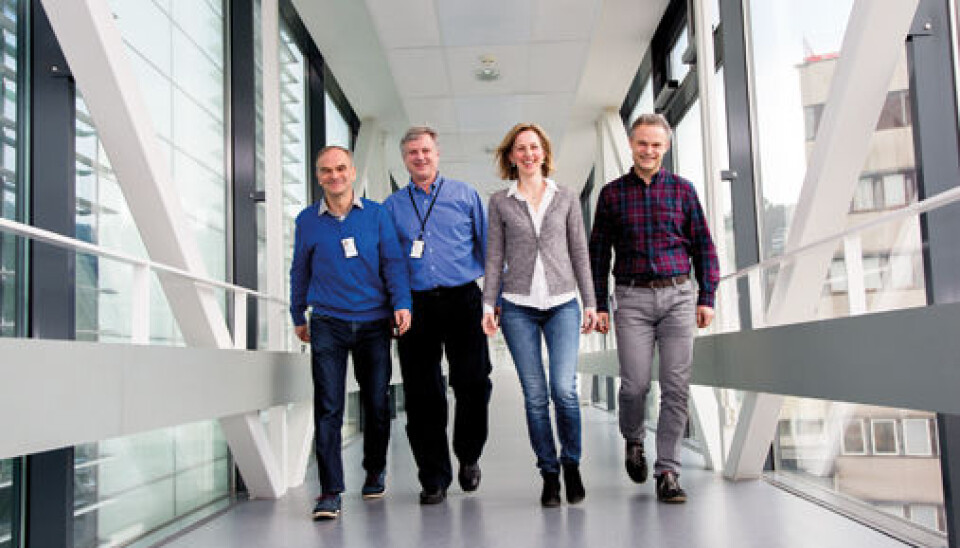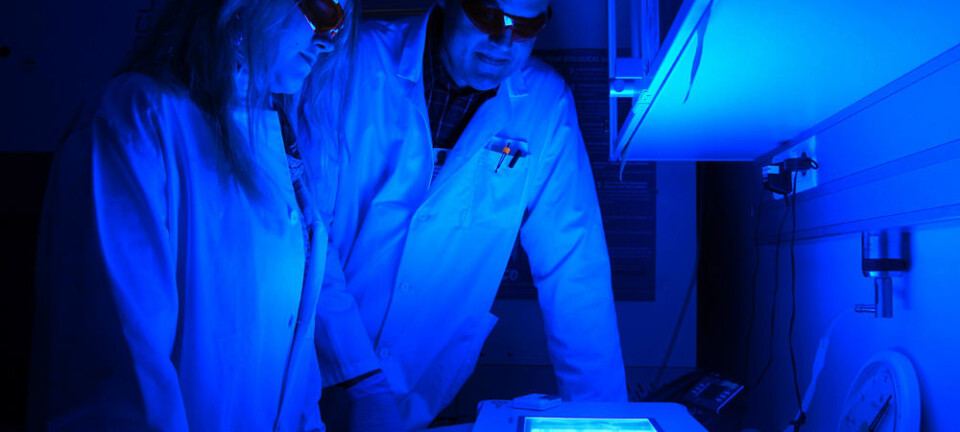An article from University of Oslo

Predicting aggressive lymphoma
A statistical genetic analysis can detect when lymphoma will be aggressive. Treatment can thereby be initiated in time.
Denne artikkelen er over ti år gammel og kan inneholde utdatert informasjon.
Lymphoma afflicts more than 1000 Norwegians annually. Many of the patients are young. A completely new statistical method developed at UiO now enables doctors to determine at an early stage of the disease process who will develop an aggressive variant, when it will occur and who will escape.
The new statistical method will be able to determine who will need a bone-marrow transplantation and who can be spared the extreme burden that this excruciating treatment entails.
The results have recently been published in Blood, a top-of-the-line journal for haematologists.
Many types of lymphoma
Lymphoma can be divided into approximately 60 subgroups. The prognoses are unpredictable. Some have no recurrence, while in others the disease recurs quickly. Some patients struggle with repeated recurrences.
Patient survival vary greatly. Some patients die within one or two years, while others survive for twenty to thirty years. Those who survive suffer from numerous symptoms. In addition, the treatment may have major adverse effects.
The two main groups of lymphoma are Hodgkin’s, which primarily affects young people – with approximately 130 cases annually – and non-Hodgkin’s, with a little less than 1000 cases annually.
In the group that develops non-Hodgkin’s, 15 per cent are afflicted by cancer of the T-cells and 85 per cent by cancer of the B-cells. T-cells and B-cells are both part of the adaptive immune defence system. B and T-cells eliminate intruders in different ways. T-cells attack bacteria and viruses in particular. B-cells produce antibodies that in turn attack intruders.
Therefore, it is extremely detrimental when cancer deactivates parts of the immune defence system.
Aggressive variant
Professors Erlend Smeland and Harald Holte at the Institute of Cancer Research, UiO, and the Department of Oncology at Oslo University Hospital are among the country’s foremost specialists in B-cell lymphoma. This is the largest group of lymphomas, which affects more than 800 Norwegians each year.
This form of cancer can be further subdivided into an aggressive and an indolent variant. The indolent form may develop very slowly without major discomfort for the patient, but it may gradually change in character and turn more aggressive. If so, the prognosis worsens. The change to the aggressive variant is called transformation. The question is: who will develop this transformation and who will be spared.
Three per cent develop this transformation in the course of a year. This means that after fifteen years, half of all those affected will have developed the transformation.
Predicting who will become ill
Together with Marianne Brodtkorb, a doctor at the Institute for Cancer Research and Ole Christian Lingjærde, professor and head of the research group for biomedical bioinformatics at the Institute of Informatics, the researchers have discovered a completely new method that can predict at an early stage of the disease who will have a recurrence and when the recurrence will appear.
“The point is to be able to tailor the treatment and nip the cancer in the bud, or delay or at best avoid the most burdensome treatment for those who are not at risk. Thus, many can have a milder form of treatment than they have today,” Harald Holte explains.
To succeed, the researchers needed to find the genetic imprint of the different cancer variants. This was a formidable task.
Historic material
The only way to do this was to examine all the fresh frozen tissue samples from the diagnostic biobank at the Norwegian Radium Hospital back to the 1970s. Norway is one of few countries in the world where tissue samples from all cancer patients have been stored. Since a part of the biopsy have been frozen, the genetic material remains intact.
The researchers compared the genetic imprint with the course of the disease in all patients, such as how the disease developed, when the aggressive variant occurred, i.e. the transformation, and for how long the patient survived.
“We found genetic markers that can predict in the early stage of disease how the patient will fare and how the course of the disease will develop”, Erlend Smeland emphasizes.
Found the most important genes
The researchers detected a total of 700 changes to both DNA and RNA. RNA is the active component of DNA.
Marianne Brodtkorb, who recently completed her PhD degree, investigated which of these 700 genes functioned in the same way. She found 14 genes which had the same function. Thereafter, she studied only these markers.
“This demonstrated for the first time that these 14 genes are associated with the transformation. These genes are known from other forms of lymphoma, but they have never before been linked to this type of lymphoma. With this new knowledge, we can now test known methods of treatment for this disease,” Brodtkorb explains.
In addition, they have identified the range of genes that fluctuate in unison with the 14 genes. These genes reinforce the effect of the disease.
“In fact, this involves a range of 30 to 50 genes for each of the 14 genes. These ranges of genes are unrelated to the 700 initial changes that were detected.”
New statistics
To compare the genetic imprints on the several thousand samples, Ole Christian Lingjærde has developed completely new statistical methods.
“We needed to use quite sophisticated statistical methods to detect the genetic signature that enables us to predict whether and when the cancer will enter an aggressive phase,” Lingjærde points out.



































